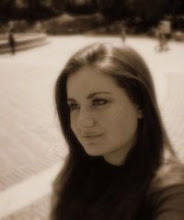


To begin build my Commedia Dell’ Arte mask I first had to make a very important decision. Which stock Commedia character would I choose? Columbina or Brighella or perhaps, Arlecchino! I made the decision to recreate an Arlecchino Commedia mask because of the type of character he (or maybe, she) is typically portrayed. An Arlecchino is said to be a bit of a slow thinker but he makes up for it with quick acrobatics and his playful attitude. He was also gluttonous and could easily be swayed by the suggestion of food. This characters action is never simple and is typically followed by a cartwheel or flip. Beware the master, for Arlecchino feared him more than anything else.
Some very common Lazzi for Arlecchino included scenes where Arlecchino was convinced he was dead and another where he would ridicule any man standing in his way of the Arlecchino’s desired female, whether she is Colombina or perhaps, an inamorato.
The Arlecchino was of the zanni, or servant class. His clothes were typical of the zanni’s plain white garb but the Arlecchino’s garb varied from all the rest. His clothes often were patched to keep the clothes from falling apart. This patching became the more popular style seen today with the colorful diamond patterns.
To make this recreation mask I began with a simple plastic mask that had the basic shape that I wanted for the mask. I then bought some white clay and began laying it on top of this base mask. I laid a basic shape first. Making a simple nose and eye holes to get the mask started. Then I wanted to make the eyes appear wide open and wide. I build up some clay around the eye and smoothed it out and down to form very elaborate eyebrow areas. Then I needed to increase the size of the nose so I add some more clay to the area around the nose and made it very round. I cut off two pieces of a straw to place in the nose holes, nostrils, to keep the shape. I smoothed the clay out enough around the nose so that the area would look natural but oversized. I also added a detail I found in my research of the Arlecchino mask. The feature was a large knot, or pimple type thing at the top of the head. The origins are entirely clear but many others claim that the knot is a symbol for devil horns. I then rolled out two thin pieces and rounded them around but above the eyes onto the forehead to enhance the overly energetic appearance. I rolled out two more slightly thicker pieces to make the enhancements for the cheeks. It is an almost pinwheel shape that is typical on the Arlecchino mask that may have something to do with the constant movement and acrobatics of this character.
After molding all this clay I needed to make sure the mask would fit my own face. I couldn’t very well glue it on and wait for it to dry. Instead I found a large, standing, round Tupperware container and taped the mask to it, giving the mask the right amount of bend to fit my face later. Using this I was unable to bake the clay as planned and instead decided to paper mache on top of the mask created out of clay. I used a flour and water mixture as the glue but added salt to help deter the molding process. I used thin pieces of newspaper to cover the front of the mask for the first layer, making sure to get all the details that I had made in the clay. After I made the first layer I used a hair dryer to speed up the drying process. To my surprise the heat also helped bake the clay some and helped the mask hold its shape better. I then repeated this step once more on the front and again used a hair dryer to speed up the drying. Next I tried to figure out how to get the mask off the mold I was using so that it could stand on its own. I carefully pulled the clay away from the base and then immediately did a layer of paper mache to the back of the mask. After one layer was down I again used the hair dryer and the heat helped to bake the back of the mask. I added another layer of paper mache to the back and wrapped it around onto the front so to help hold shape. I then got the same Tupperware container and set the mask against it and placed the dryer in front to allow the heat to set the mask into the shape I wanted.
After all the clay was mostly baked and the paper mache was dry I then had to choose what colors I was going to paint it. Most of my research showed me very one tone masks, most in blacks and browns. I decided to go with the black base but I used gold to accent the enhancements on the mask and I dry brushed the entire mask to add some color to it. The gold helps to catch some of the light and reflect it more.
After the paint was dry I used super glue to attach two ribbons that can be used to hold the mask onto the face. The mask still has some softness to it which helps allow it to move just slightly without changing its shape any. I do not believe any of the materials I used would have been real authentic to the time period except for maybe the clay, but the style of the mask is typical of the research. Other research suggest that the Arlecchino is cat-like or devil-like.

No comments:
Post a Comment